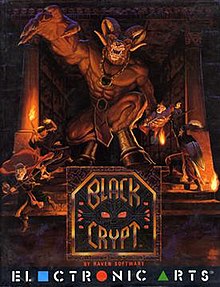
Raven Software Corporation is an American video game developer based in Middleton, Wisconsin, and part of Activision. Founded in May 1990 by brothers Brian and Steve Raffel, the company is most known for the dark fantasy franchise Heretic/Hexen, the first two Soldier of Fortune games, as well as licensed titles based in the Star Wars: Jedi Knight series and Marvel Comics's X-Men characters, including 2006's Marvel: Ultimate Alliance. Since 2011, Raven has been working on multiple Call of Duty games as both lead and support developer.

Pinball Fantasies is a 1992 pinball video game originally developed by Digital Illusions and published by 21st Century Entertainment in Europe for the Amiga home computers. It is the sequel to Pinball Dreams, which was released earlier in the same year on multiple platforms. In the game, players can choose between any of the four available playfields, both of which have their own thematic and main objectives in order to obtain the highest score possible.

Top Banana is an environmentally-themed platform game produced by Hex and Psycore for the Acorn Archimedes in 1991 and ported to the Amiga and Atari ST in 1992. The chief artist and coder was Miles Visman, with supporting graphics and sound by Karel Dander and supporting graphics by Sophie Smith, Robert Pepperell and Matt Black. Top Banana was released using recycled cardboard packaging, furthermore being advertised as being the 'first video game with recycled packaging'. Top Banana's plot is about trying to save the environment from pollution using love.

Total Carnage is a multidirectional shooter arcade video game originally developed and published by Midway in North America in January 1992. Set in the fictional country of Kookistan during 1999, players assume the role of Captain Carnage and Major Mayhem from the Doomsday Squad in a last-ditch effort to overthrow dictator General Akhboob and his army of mutants from conquering the world, while also rescuing POWs held by his military force.

Monster Business is a 1991 vertically scrolling platform game developed by Eclipse Software Design and published by Ascon that was released for the Amiga and Atari ST.

Ruff 'n' Tumble is a 1994 platform run and gun video game developed by Wunderkind and published by Renegade Software for the Amiga. An Amiga CD32 version was planned but never released. It was the only game made by Wunderkind. It stars Ruff Rodgers, embarking on a quest across an alien planet to reclaim his marbles after one of them fell into a portal inside a rabbit hole while playing with his collection in the park, and free the planet from Dr. Destiny and his Tinhead army. Through the journey, the player explores and search through each level for items and power-ups, as well as fight enemies and defeat bosses.
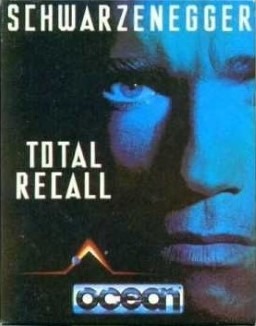
Total Recall is a 1990 platform game developed and published by Ocean Software that was released for the Commodore 64, Amiga, Amstrad CPC, ZX Spectrum, Atari ST, and Nintendo Entertainment System. Total Recall is based on the 1990 film of the same name.

Bomberman, also known as Dyna Blaster in Europe, is an action-maze video game originally developed and published by Hudson Soft for the PC Engine in Japan on 7 December 1990 and later in North America for the TurboGrafx-16 by NEC in 1991. Belonging to the Bomberman franchise, it is a re-imagining of the first game in the series starring White Bomberman on a quest to rescue Lisa, the kidnapped daughter of his inventor Dr. Mitsumori, from the castle of Black Bomberman while defeating evil monsters and villains that work for him. The game was later ported to home computers, each one featuring changes compared to the original version. Conversions for other platforms were in development but never released. The title garnered positive reception from critics since its initial release on the PC Engine/TurboGrafx-16 and later on home computers.

Elvira II: The Jaws of Cerberus is the second game in the Elvira series of horror adventure/role-playing video games. It was developed by Horror Soft and published by Accolade in 1992. The game is a sequel to 1990's Elvira: Mistress of the Dark. It was followed by Waxworks, which can be considered its spiritual sequel.

Front Lines is a 1994 turn-based strategy computer wargame for MS-DOS developed and published by Impressions Games.

Abandoned Places: A Time for Heroes is a 1992 Hungarian dungeon crawler role-playing video game developed by ArtGame and published by International Computer Entertainment for Amiga and DOS platforms. A sequel, Abandoned Places 2, was released in 1993 for Amiga.
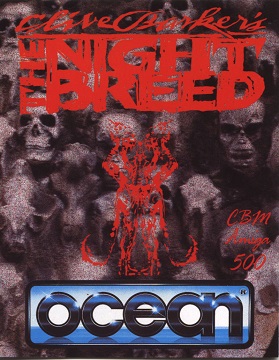
Clive Barker's Nightbreed: The Interactive Movie is a 1990 arcade adventure video game developed by Impact Software and published by Ocean Software on Atari ST and DOS. It is based on Clive Barker's movie Nightbreed, which in turn is based on Barker's novella Cabal. It was originally supposed to be part of a trilogy, alongside Clive Barker's Nightbreed: The Action Game and an ultimately-unreleased RPG.

Brutal Sports Football is a 1993 sports video game developed by Teque London and originally published by Millennium Interactive for the Amiga. It was re-published for MS-DOS and Amiga CD32, and later became the first third-party title published for the Atari Jaguar. The first entry in the Brutal Sports series, the game is a fictional style of football played against human or computer-controlled opponents. It features a different take on american football by emphasising the violent aspect of the sport.
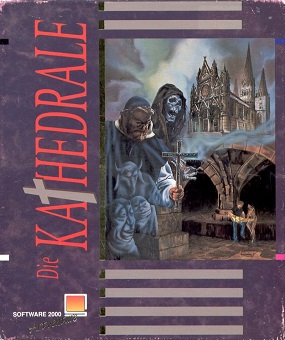
Die Kathedrale is a 1991 German text adventure game developed by Weltenschmiede and published by Software 2000 for the Amiga and DOS. Die Kathedrale is part of a text adventure trilogy; it is preceded by Das Stundenglas (1990) and succeeded by Hexuma (1992). The trilogy lacks an overarching plot, and in each entry the setting, role of the protagonist, and goal differ between each game. Games in the trilogy do not require knowledge of the other entries and may be played as standalone games.
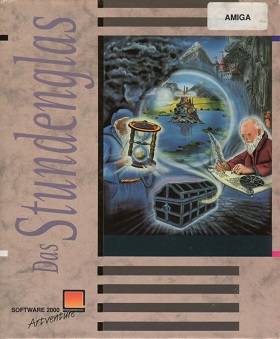
Das Stundenglas is a German text adventure game published in 1990 by Software 2000 and developed by Weltenschmiede, and released for Amiga, Atari ST and DOS. Das Stundenglas is part of a text adventure trilogy; it is succeeded by Die Kathedrale (1991) and Hexuma (1992). The trilogy lacks an overarching plot, and in each entry the setting, role of the protagonist, and goal differ between each game. Games in the trilogy do not require knowledge of the other entries and may be played as standalone games.

Cover Girl Strip Poker, alternately titled Cover Girl Poker, is a 1991 erotic video game based upon five-card strip poker and originally developed and self-published by Emotional Pictures; it was released for the Amiga, DOS, Commodore 64, CDTV, and CD32. Cover Girl Strip Poker is the original Danish title; it was retitled Cover Girl Poker outside of Denmark in the rest of Europe, and the title was subsequently reverted to Cover Girl Strip Poker for the European CDTV and CD-ROM DOS releases. Emotional Pictures was a subsidiary of Danish company InterActive Vision A/S.

Deathbringer is a 1991 side scrolling action game developed by Oxford Digital Enterprises and published by Empire that was released for the Amiga, DOS, and Atari ST.
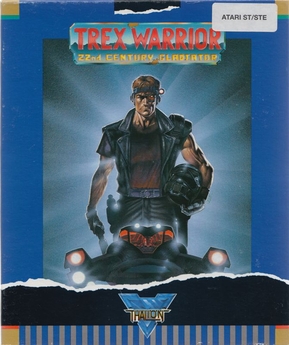
Trex Warrior: 22nd Century Gladiator is a 1991 action video game developed and published by Thalion Software for the Amiga and Atari ST. Previously unreleased in the United Kingdom, the game was released in 1993 on The One magazine cover disk as public-domain software.
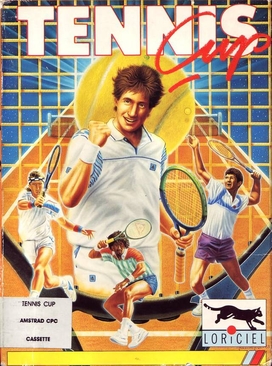
Tennis Cup is a 1990 tennis video game developed and published by Loriciel for the Amiga. It was ported to the Atari ST, MS-DOS and Amstrad CPC during the same year. Tennis Cup was ported to TurboGrafx-16 in 1991 as Davis Cup Tennis. Versions for the Super Nintendo and Mega Drive/Genesis were released in 1993.
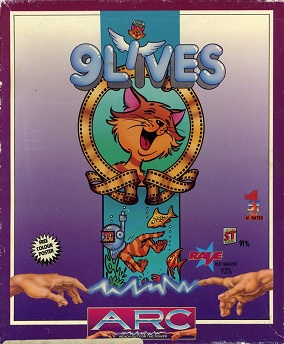
9 Lives is a platform game released in 1990 for the Amiga and Atari ST. It was developed by ARC, a software division of Atari Corporation. The player takes the role of Bob Cat, who must rescue Claudette from a mad scientist who kidnapped her.
